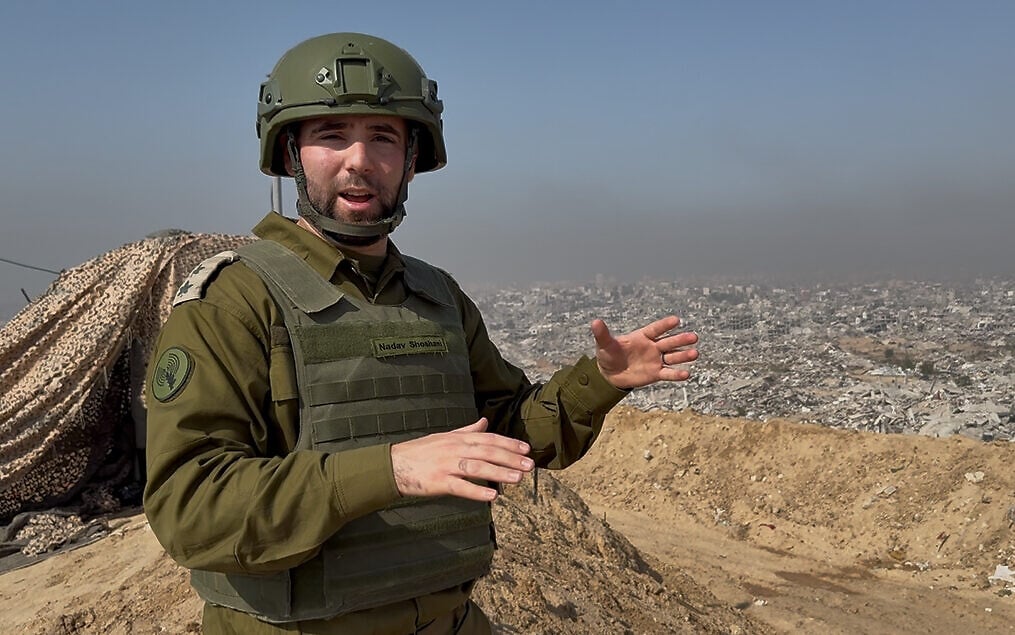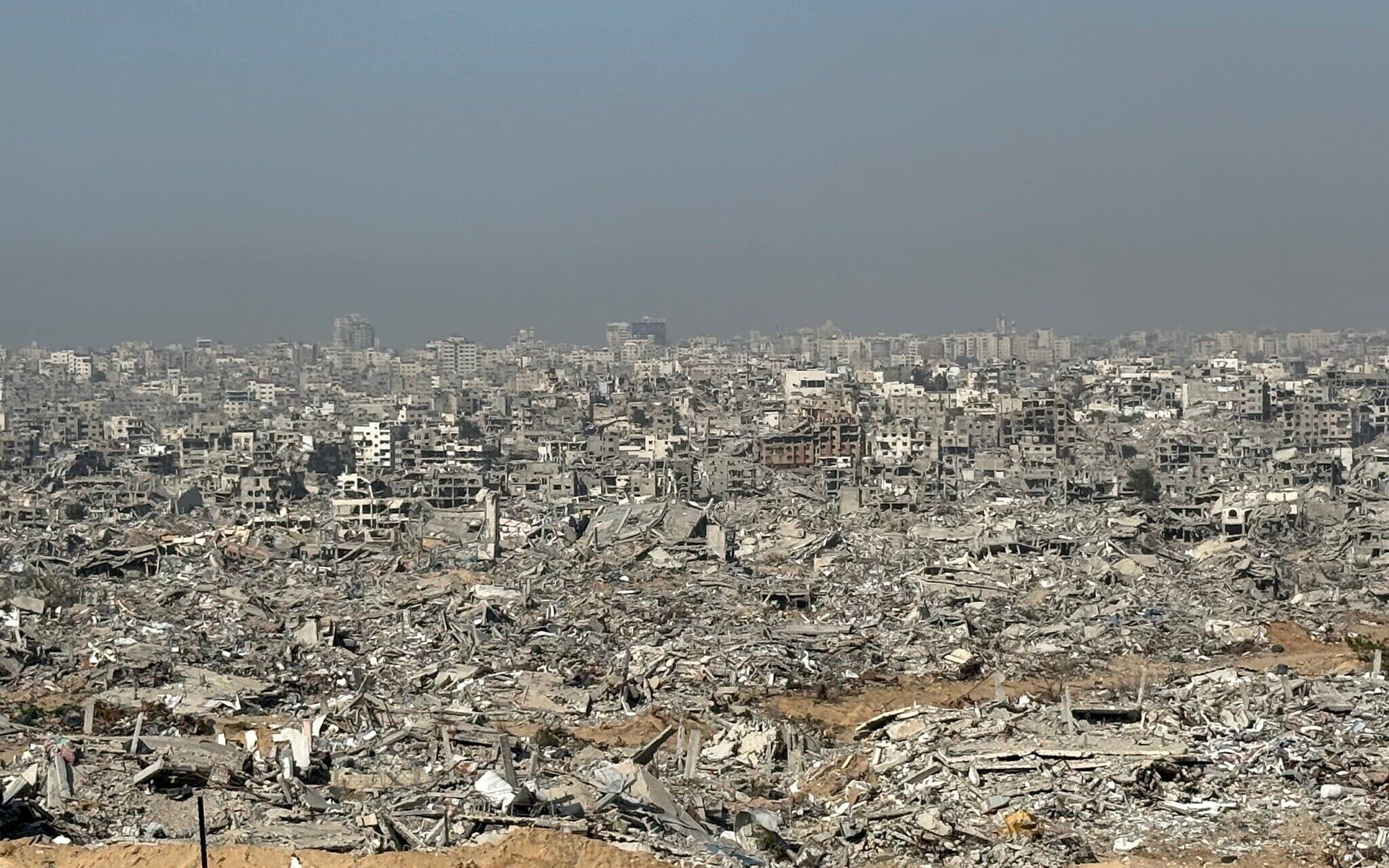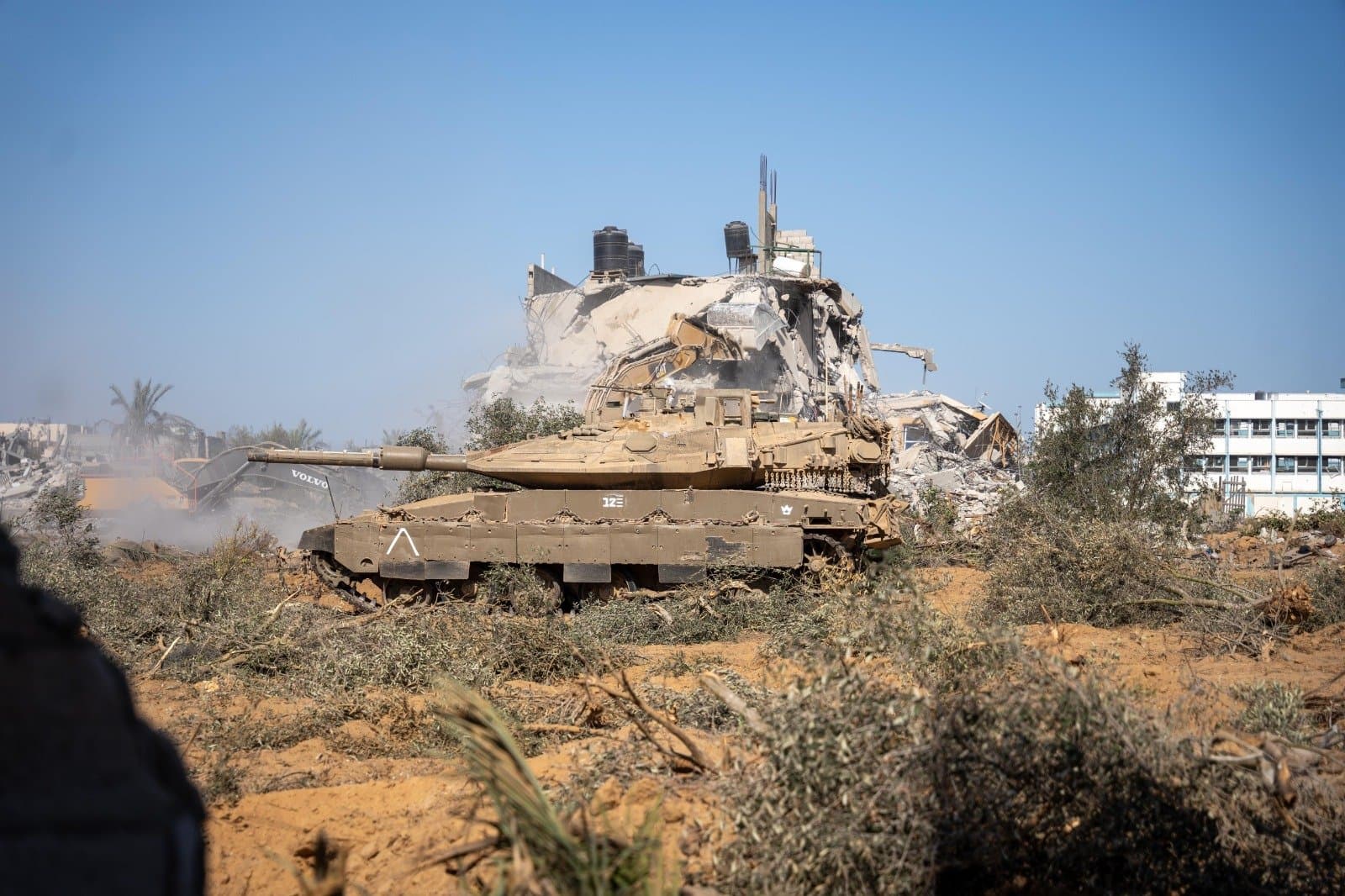SHEJAIYA, Gaza Strip — In Gaza City this week, a vast landscape of gray rubble stretched as far as the eye could see against a vibrant blue sky marred by dust and dark pillars of smoke.
Since the ceasefire between Israel and Hamas went into effect on October 10, IDF forces have pulled back to the so-called Yellow Line. The boundary, steadily being demarcated by concrete blocks coated in yellow paint, now separates Israeli-held territory from the 47% of the Strip left in Hamas’s hands.
More than a month into the agreement, the ceasefire remains shaky, and marks only the first phase of US President Donald Trump’s peace plan in Gaza. The second phase — which includes the disarmament of Hamas — remains stalled, with no indication of when, or even whether, it will begin.
“Hamas is not disarming; they are actually rearming,” Lt. Col. Nadav Shoshani said on Wednesday morning. “It’s a big problem, and it’s something that we will not accept.”
Shoshani made the comments to Israeli and international journalists at an army post inside Gaza City’s eastern Shejaiya neighborhood, roughly 200 meters inside the Yellow Line.
The position sits in what used to be one of Hamas’s most fortified strongholds, an area that has seen repeated heavy fighting in the past two years and where dozens of IDF soldiers have been killed.
Nearly a decade before the Hamas-led massacre on October 7, 2023, sparked the two-year Gaza war, Shejaiya was already a bloody battleground. In 2014, two days after Israel launched the ground offensive known as Operation Protective Edge to find and demolish Hamas’s cross-border attack tunnels and thwart rocket fire, seven soldiers were killed fighting in the neighborhood — including Staff Sgt. Oron Shaul, whose body was abducted by Hamas and retrieved by the IDF this year.
Standing on the outer edge of the post, the skyline of Gaza City — much of which narrowly escaped devastation when the IDF’s planned campaign to conquer it was halted by the recent ceasefire — was hard to ignore. The intact high-rises of the city — where much of the Gazan population is still located — contrasted sharply with the jagged mounds of destruction on the Israeli-controlled side of the Strip.
Shoshani, the IDF spokesman accompanying the tour, said the army’s mission on its side of the boundary is threefold: preventing or responding to Hamas violations, removing terror infrastructure, and securing the movement of humanitarian aid.

According to Shoshani, the IDF has confronted hundreds of Hamas violations of the ceasefire since the agreement went into effect.
Within the first 10 days of the ceasefire, Palestinian terror operatives in Rafah killed two IDF soldiers, prompting Israel to accuse Hamas of violating the truce and to launch retaliatory strikes on terror targets. Ten days later, an =IDF reservist was killed in a similar attack in the Rafah area, triggering another round of Israeli airstrikes.
The military has reported multiple cases in which it killed terror operatives who crossed over the line and endangered troops. According to Palestinian authorities, Israeli forces have killed 305 people in strikes on Gaza since the truce began, nearly half of them in one day when Israel retaliated for the attack that killed the third soldier.
Shoshani said that numerous crossings of the line and attacks have persisted.
Bursts of machine-gun fire could be heard in the distance during the visit, along with the buzz of drones overhead. Shoshani said the gunfire “appeared to be coming from deep within Gaza City,” possibly indicating another Hamas violation. “Hamas tests us daily,” he said.
Hours after the tour concluded, reports emerged that terror operatives had opened fire on troops in Gaza’s south, in the Khan Younis area, on the eastern, Israeli-held side of the Yellow Line, prompting the IDF to launch a wave of airstrikes against Hamas targets. Palestinian media said the strikes killed at least nine people. The terror group denounced the strikes as a “dangerous escalation” that risked jeopardizing the ceasefire.
Shoshani placed responsibility squarely on Hamas. “We are committed to the agreement,” he said. “The problems right now are that Hamas needs to finish returning all the hostages, and Hamas needs to disarm — two things that are vital parts of the agreement that Hamas is refusing to do.”
Even in areas the IDF previously cleared, new threats have emerged, Shoshani explained, saying that troops had recently found “newly placed weaponry” in buildings between the post and the Yellow Line. A few weeks ago, soldiers uncovered “different types of weapons… mortars, explosives” in one such structure — the same area where the remains of deceased hostage Staff Sgt. Itay Chen were unearthed by Hamas.
A Sunday report by the Kan public broadcaster indicated that Hamas has begun amassing advanced weapons and stockpiling them abroad in the hopes of smuggling them into Gaza in the future, amid reports that the US may relinquish its demand that the terror group disarm.

The scale of Hamas infrastructure in the Shejaiya area, both above ground and below it, helps explain the destruction surrounding the post and the difficulty of enforcing the ceasefire, Shoshani added.
“When you speak to commanders in this area, they’ll tell you that every single house had a history of booby traps, of a tunnel underneath it or a tunnel shaft, or Hamas fighting within it,” he said.
The IDF also faces challenges related to Hamas operatives who remain hidden on the eastern side of the Yellow Line. In southern Gaza, Trump’s senior advisers and Prime Minister Benjamin Netanyahu have been aiming to find a solution to a standoff over 100-200 gunmen holed up in Rafah tunnels on the Israeli side of the line. Shoshani only said that there were still a “few dozens of terrorists” on the IDF-controlled side — “not exclusively in the south” — that he insisted “need to be dealt with.”
Troops stationed along the line face the added challenge of distinguishing civilians from terror operatives approaching the boundary.
Shoshani described the rules of engagement. “Their job is to give warnings to differentiate, to make sure that the civilians go back,” he said, adding that “the vast majority” of violations are by Hamas members. “And in the very, very few cases where it’s civilians, they’re able to hear the warnings and go back. There are different ways of warnings. It could be audio, it could be firing in the air,” he said.
Alongside security duties, the IDF is also working to ensure humanitarian aid continues entering Gaza. Aid began flowing through the Zikim Crossing last week, Shoshani said, adding that hundreds of trucks a day were now entering the Strip, while pointing to recent footage of Hamas looting UN aid trucks.
Asked whether the newly created US-led Civil-Military Coordination Center in the Israeli town of Kiryat Gat, tasked with overseeing the ceasefire, has affected operations, he said: “Not in the day-to-day, not yet.”
The military’s moves under the next phase of the plan — including the introduction of an International Stabilization Force envisioned in the US-backed proposal approved by the UN Security Council this week — hinge on effective disarmament of Hamas, he said. “Once the agreement moves forward, when Hamas is disarmed, then the international security force is put in. Then we will start our process. But as we’re speaking right now, Hamas has not done its part of the agreement.”

